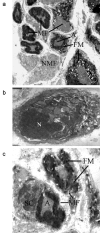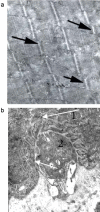Impulse magnetic stimulation facilitates synaptic regeneration in rats following sciatic nerve injury
- PMID: 25657659
- PMCID: PMC4308799
- DOI: 10.3969/j.issn.1673-5374.2012.17.003
Impulse magnetic stimulation facilitates synaptic regeneration in rats following sciatic nerve injury
Abstract
The current studies describing magnetic stimulation for treatment of nervous system diseases mainly focus on transcranial magnetic stimulation and rarely focus on spinal cord magnetic stimulation. Spinal cord magnetic stimulation has been confirmed to promote neural plasticity after injuries of spinal cord, brain and peripheral nerve. To evaluate the effects of impulse magnetic stimulation of the spinal cord on peripheral nerve regneration, we compressed a 3 mm segment located in the middle third of the hip using a sterilized artery forceps to induce ischemia. Then, all animals underwent impulse magnetic stimulation of the lumbar portion of spinal crod and spinal nerve roots daily for 1 month. Electron microscopy results showed that in and below the injuryed segment, the inflammation and demyelination of neural tissue were alleviated, apoptotic cells were reduced, and injured Schwann cells and myelin fibers were repaired. These findings suggest that high-frequency impulse magnetic stimulation of spinal cord and corresponding spinal nerve roots promotes synaptic regeneration following sciatic nerve injury.
Keywords: experimental neuropathy; impulse magnetic stimulation; neural regeneration; neuroplasticity; sciatic nerve lesion.
Conflict of interest statement
Figures




Similar articles
-
Nerve root magnetic stimulation regulates the synaptic plasticity of injured spinal cord by ascending sensory pathway.Neural Regen Res. 2025 Dec 1;20(12):3564-3573. doi: 10.4103/NRR.NRR-D-24-00628. Epub 2025 Jan 13. Neural Regen Res. 2025. PMID: 40095662 Free PMC article.
-
Effect of the combination of high-frequency repetitive magnetic stimulation and neurotropin on injured sciatic nerve regeneration in rats.Neural Regen Res. 2020 Jan;15(1):145-151. doi: 10.4103/1673-5374.264461. Neural Regen Res. 2020. PMID: 31535663 Free PMC article.
-
Nerve root magnetic stimulation improves locomotor function following spinal cord injury with electrophysiological improvements and cortical synaptic reconstruction.Neural Regen Res. 2022 Sep;17(9):2036-2042. doi: 10.4103/1673-5374.335161. Neural Regen Res. 2022. PMID: 35142694 Free PMC article.
-
Multimodal treatment for spinal cord injury: a sword of neuroregeneration upon neuromodulation.Neural Regen Res. 2020 Aug;15(8):1437-1450. doi: 10.4103/1673-5374.274332. Neural Regen Res. 2020. PMID: 31997803 Free PMC article. Review.
-
New trend in neuroscience: low-power laser effect on peripheral and central nervous system (basic science, preclinical and clinical studies).Neurol Res. 1992 Mar;14(1):2-11. doi: 10.1080/01616412.1992.11740003. Neurol Res. 1992. PMID: 1351254 Review.
Cited by
-
Repetitive magnetic stimulation prevents dorsal root ganglion neuron death and enhances nerve regeneration in a sciatic nerve injury rat model.Sci Rep. 2024 Aug 16;14(1):19016. doi: 10.1038/s41598-024-69251-4. Sci Rep. 2024. PMID: 39152157 Free PMC article.
-
Pulsed electrical stimulation protects neurons in the dorsal root and anterior horn of the spinal cord after peripheral nerve injury.Neural Regen Res. 2015 Oct;10(10):1650-5. doi: 10.4103/1673-5374.167765. Neural Regen Res. 2015. PMID: 26692864 Free PMC article.
-
Advancements in stimulation therapies for peripheral nerve regeneration.Biomed Mater. 2024 Aug 22;19(5):10.1088/1748-605X/ad651d. doi: 10.1088/1748-605X/ad651d. Biomed Mater. 2024. PMID: 39025114 Free PMC article. Review.
-
Reducing Neuron Apoptosis in the Pontine Micturition Center by Nerve Root Transfer for Restoration of Micturition Function after Spinal Cord Injury.Biomed Res Int. 2020 Aug 4;2020:5615097. doi: 10.1155/2020/5615097. eCollection 2020. Biomed Res Int. 2020. PMID: 32802856 Free PMC article.
-
Repetitive Peripheral Magnetic Stimulation (rPMS) in Subjects With Lumbar Radiculopathy: An Electromyography-guided Prospective, Randomized Study.In Vivo. 2021 Jan-Feb;35(1):623-627. doi: 10.21873/invivo.12300. In Vivo. 2021. PMID: 33402518 Free PMC article. Clinical Trial.
References
-
- Rashidov NA. SPb: MMA; 2001. Evaluation of clinical and electrophysiological effectiveness of come conservative methods in treatment of traumatic neuropathies.
-
- Zhivolupov SA. SPb: MMA; 2000. Traumatic neuropathies and plexopathies (pathogenesis, clinics, diagnostics and treatment)
-
- Zhivolupov SA, Samartsev IN. Neuroplasticity: pathophysiological patterns and perspectives of therapeutic modulation. Zh Nevrol Psikhiatr Im S S Korsakova. 2009;109(4):78–84.
-
- Min Y, Beom J, Oh BM, et al. Possible effect of repetitive magnetic stimulation of the spinal cord on the limb angiogenesis in healthy rats and its clinical implication for the treatment of lymphedema. Clin Cancer Res. 2010;16:47.
LinkOut - more resources
Full Text Sources
